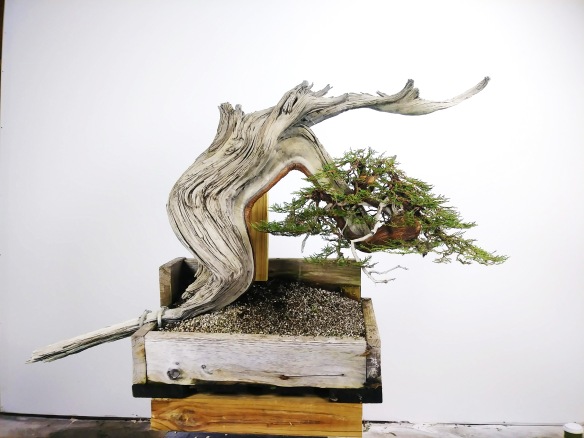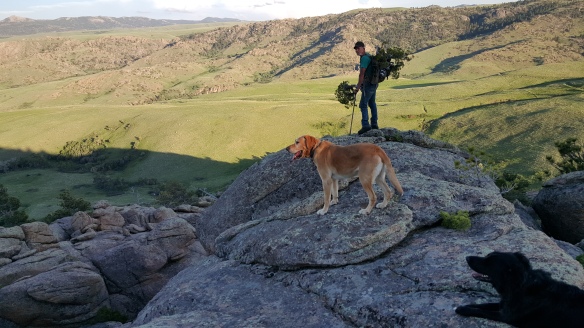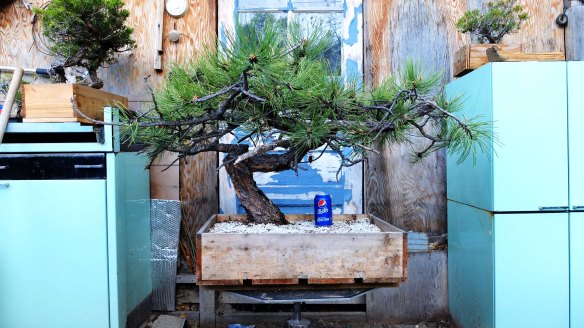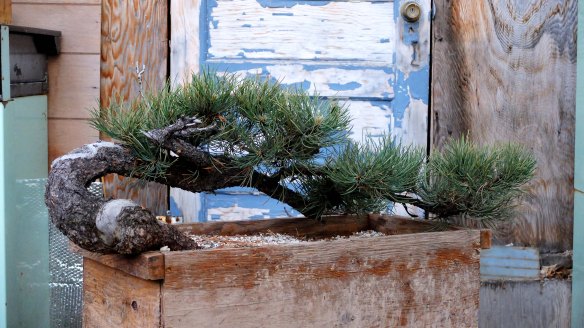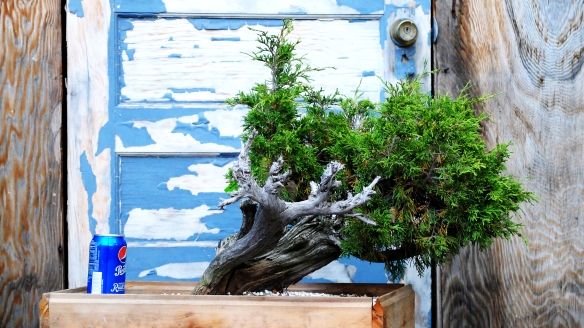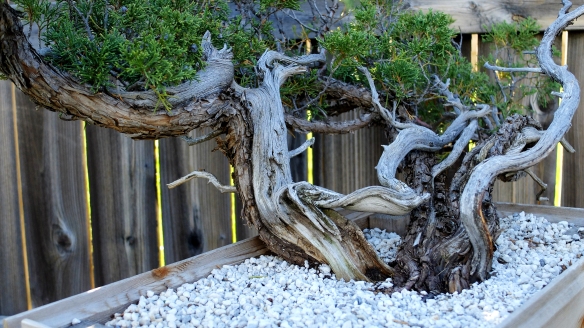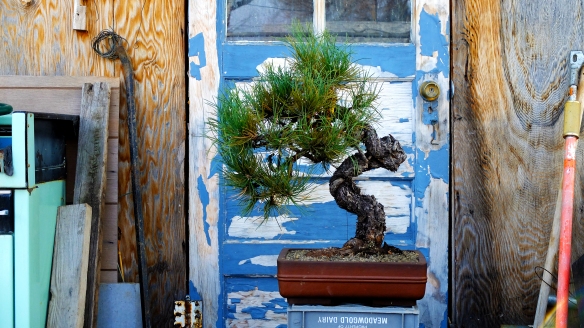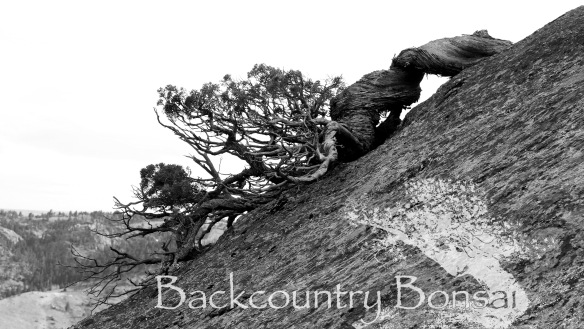
Alright people. We are long overdue for an article on ethics and responsible collecting. An in depth blog post will follow shortly but in the meantime, we all need to chew on this:
The future of bonsai in America rests on all of our shoulders. There are truly magnificent trees to be honored and treasured as our great country matures in the artistry and appreciation of bonsai. Japan has an incredible history in bonsai while we are still living the first chapters of our story. Many Japanese bonsai are literally centuries old in their training! Here at Backcountry our greatest pride is in the hope and confidence that many of the trees we find are worthy of such a future in American bonsai history. There are still trees of this caliber to be found, BUT the availability and survivability of those trees depends greatly upon all of us, and in particular how we conduct ourselves as a community.
You may have noticed that we don’t post nearly as often as we used to. We’ve really enjoyed sharing our adventures with you all over the past five years. We love sharing the stories and trees, and in a sense, bringing you all along with us. But there is also the risk that our sharing will (or has) inspired too many, or rather, the wrong people to follow suit. We fully understand that other people will go collecting, that’s fine, but if you’re going to do it for heaven’s sake either know your limits or go with someone who does.
One of our goals from the beginning has been to promote ethical and responsible collecting to those who do or will collect; but when it comes down to it we each make our own choices based upon our individual values.
As bonsai people, there’s an assumption that we all value and respect trees, especially trees that are significantly older than we are. It’s assumed that we all have the decency to avoid needlessly wasting the lives of these trees. Unfortunately, it’s become very apparent that at least one of us may not share these values.
Frankly, we’re disgusted.
We’ve found evidence of someone collecting in an area we frequent, likely early this spring. That’s not the problem, it’s public land so they had the right to be there; the problem is the evidence its self. Blatant disregard and disrespect! Several trees were jacked around and clearly left to die. (For one, why the hell would you prune foliage off before even verifying that you can successfully collect the tree?) This person was not a complete “newbie” in bonsai. They knew good trees, because that’s what they were messing with.
The tree pictured here, and in the video on ‘Facebook,’ is a very nice limber pine. If left alone, it should have lived on for decades right where it was; if collected properly, it could have lived out its legacy in the hands of artisans, offering inspiration to us and generations to follow. The more we investigated the remains the more certain we are that, if properly collected, it would have been a very successful collection. (Hell, after the effort put into damaging it, it still had enough roots hanging on the base to have at least warranted an attempt at saving the tree.)
Although the tree won’t survive, we took the time to disguise (jin) the pruning cuts and tidy things up as much as possible. Why? Because we care! We care about the trees. We care about the future privilege of being able to legally collect trees like this. We care about the integrity of the bonsai community, and more specifically the community of collectors. Actions like this make us all look bad. The last thing we need is for a rancher or forester coming across this and thinking it was us or one of the professionals who depends on collecting for a significant portion of their living.
A side note to whoever this was: Another tree you left, the little fir that you pruned branches from (again, why?) and proceeded to ram your bar into… we assume to see if it would move? Apparently you didn’t care about barking the thing up. It obviously didn’t move with a ram of your bar, which we figure is why you left it with pruned branches and scars all over the trunk. Anyway, we collected the little tree with more than enough roots to ensure its survival, and it’s with us now. Please, leave the trees alone. There are far less violent ways of investigating collectability. But please, just leave the tress alone.
The bottom line is this: If you’re going to collect, do it with integrity, do it with respect, and do it right. Respect the land. Respect the trees. Respect the land owners. Buy permits or ask permission. If you do not have permission to access private land then don’t trespass. If you do not have tree permits do not collect on public or government land. If you don’t have the knowledge, or the appropriate tools to extract a tree with a viable root pad, leave it alone. If you don’t have enough self-control to leave the tree of your dreams where it’s at, don’t go collecting at all, because more than likely the tree of your wildest bonsai dreams is not collectible in the first place.
There’s more depth and meaning to the word “respect” in relation to bonsai and collecting than you might realize, and you can be sure we’ll be writing more on this in the future.
Fortunately, on a more positive note, over years of collecting and hundreds of miles hiked this is the first time we’ve encountered this kind of waste and disrespect. If we all pull together as a bonsai community maybe we can nip this in the bud before it gets out of hand. Individuals have collected in these areas for the past several decades, and from our perspective they’ve done a decent job of respecting the land and the trees. We’ve established relationships with many of the top Rocky Mountain region collectors and we are familiar enough with their ethics, dignity and collecting technique to say confidently that we don’t believe it was any of them. This is a call for all of us to support the people doing it right and condemn malpractice.
To those out there who think people who collect trees from the wild are evil tree destroyers and “high alpine destructionists”… Here are the facts: Here at Backcountry Bonsai, our purpose is not simply to dig up trees for sale. Our passion lies in the hunt for outstanding trees, and the continued development of those trees into truly unique works of living art by the hands of artisans. We intentionally work with many of the best artisans in the country to ensure a long and bright future for our trees. For every tree we dig form a rock pocket there are at least 100 more we don’t touch. We are looking for a very specific combination of characteristics and viable collectability that only come together in a few select trees. The rest we leave alone and value for the incredible inspirational trees they are, where they are. We have a deep-rooted respect for nature, and the authorities and landowners who steward the land we collect from; many of whom are friends. We collect legally, ethically, and respectfully. We maintain a “leave no trace” standard for collecting, and we take pride in leaving every site looking untouched by man. We hold ourselves accountable to these standards, and we ask that others do the same. We truly believe that bonsai has the power to increase peoples appreciation and respect for nature, more so in fact than most other mediums of art. I believe we can find common ground in the desire to be closer and more deeply connected to nature.
And finally a moment of transparency, a disclaimer if you will: We have lost trees. We’ve even lost a few very good trees. We do NOT however, jerk trees out of the ground, or leave them with absolutely no chance of survival. Every tree we lose is a tree we own, we own responsibility for our actions. We give the trees everything we’ve got to ensure survival after collection, and we experience the pain of every loss in person, on our benches. Our success rate is consistently 90-95%, and we’re proud of it, but that 5-10% still hurts, and we use that pain as inspiration to constantly strive for better and better results.
Once again, it all boils down to RESPECT. Respect the trees. Respect the land. Respect the land owner. Respect the fact that your actions affect more than just yourself.
Sincerely,
Backcountry Bonsai










